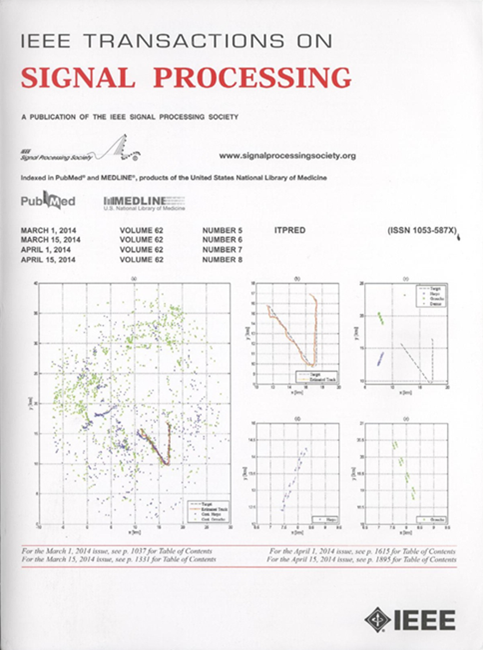基于单元格异常值数据的协方差矩阵估计的惩罚似然方法
IF 4.6
2区 工程技术
Q1 ENGINEERING, ELECTRICAL & ELECTRONIC
引用次数: 0
摘要
在最近的一篇论文中,我们提出了一种从可能包含异常值的多元数据集$\{\mathbf{y}(t)\}$估计协方差矩阵的方法。如果通过这种方法将$\mathbf{y}(t)$标记为偏离,则整个向量$\mathbf{y}(t)$被认为不包含有用的信息并被丢弃。但是,在某些应用程序中,数据包含单元格离群值,也就是说,不是$\mathbf{y}(t)$的所有元素都是离群值,而只是其中的一些。然后只需要从数据中消除单元格异常值,而不是整个向量$\mathbf{y}(t)$。在本文中,我们提出了一种惩罚最大似然方法,用于从具有细胞异常值的数据中进行异常值检测和协方差矩阵估计。具体来说,对于给定的协方差矩阵估计,我们通过最大化数据的惩罚似然来估计数据集中异常值的位置,惩罚来自似然比的性质和错误发现率(FDR)原则。我们将此步骤与估计给定离群位置的协方差矩阵的最大化最小化(MM)技术交替进行。MM比期望最大化(EM)算法更灵活,通常用于从缺少单元格的数据中估计协方差矩阵,因为前者可以在后者不可用的情况下使用。与我们的方法最接近的竞争对手是cellMCD(最小协方差行列式)方法,与之相比,我们提出的方法在引言和数值研究部分中描述了许多优点。本文章由计算机程序翻译,如有差异,请以英文原文为准。
Penalized Likelihood Approach to Covariance Matrix Estimation From Data With Cell Outliers
In a recent paper we have proposed an approach for estimating the covariance matrix from a multivariate data set
$\{\mathbf{y}(t)\}$ $\mathbf{y}(t)$ $\mathbf{y}(t)$ $\mathbf{y}(t)$ $\mathbf{y}(t)$
求助全文
通过发布文献求助,成功后即可免费获取论文全文。
去求助
来源期刊

IEEE Transactions on Signal Processing
工程技术-工程:电子与电气
CiteScore
11.20
自引率
9.30%
发文量
310
审稿时长
3.0 months
期刊介绍:
The IEEE Transactions on Signal Processing covers novel theory, algorithms, performance analyses and applications of techniques for the processing, understanding, learning, retrieval, mining, and extraction of information from signals. The term “signal” includes, among others, audio, video, speech, image, communication, geophysical, sonar, radar, medical and musical signals. Examples of topics of interest include, but are not limited to, information processing and the theory and application of filtering, coding, transmitting, estimating, detecting, analyzing, recognizing, synthesizing, recording, and reproducing signals.
 求助内容:
求助内容: 应助结果提醒方式:
应助结果提醒方式:


